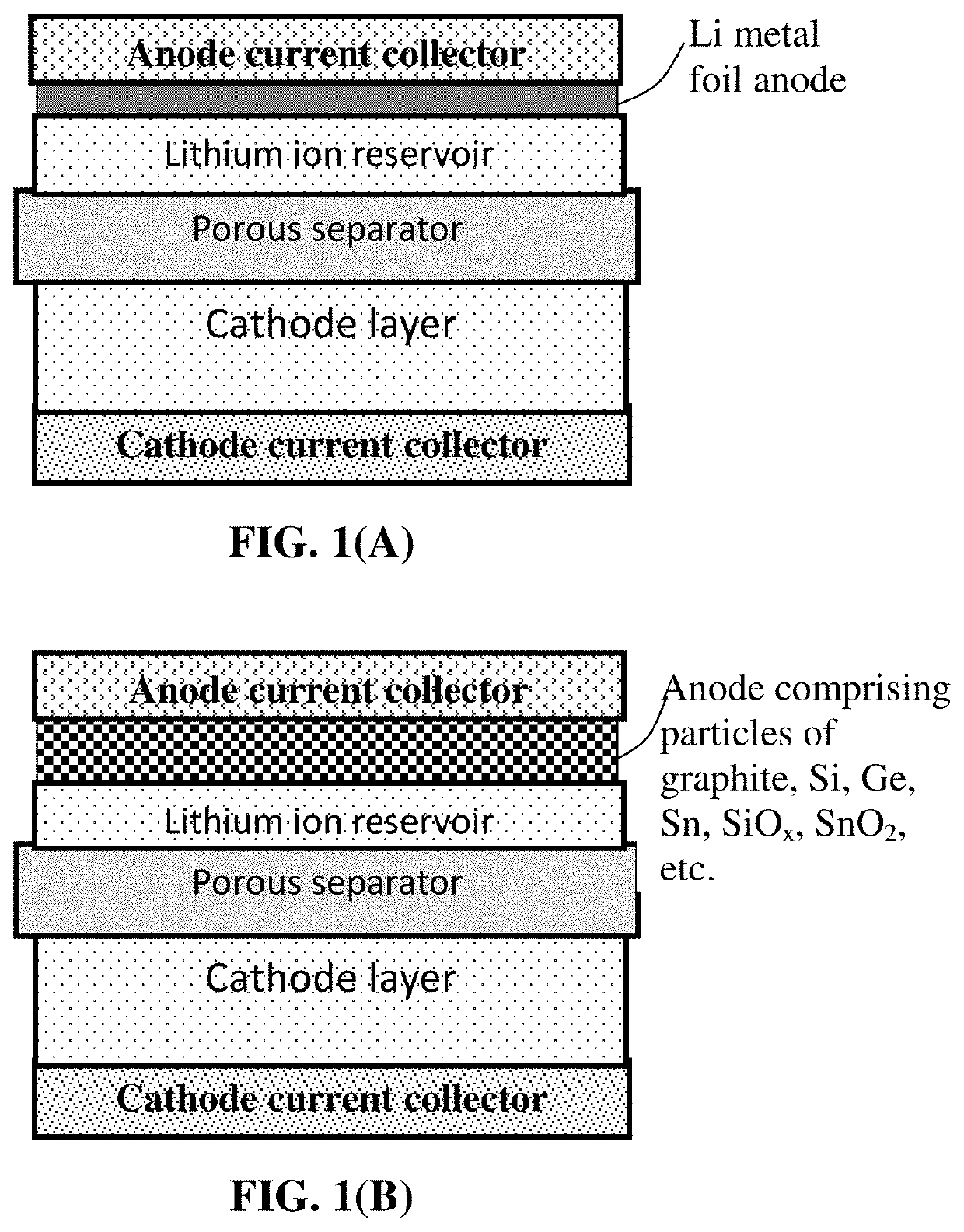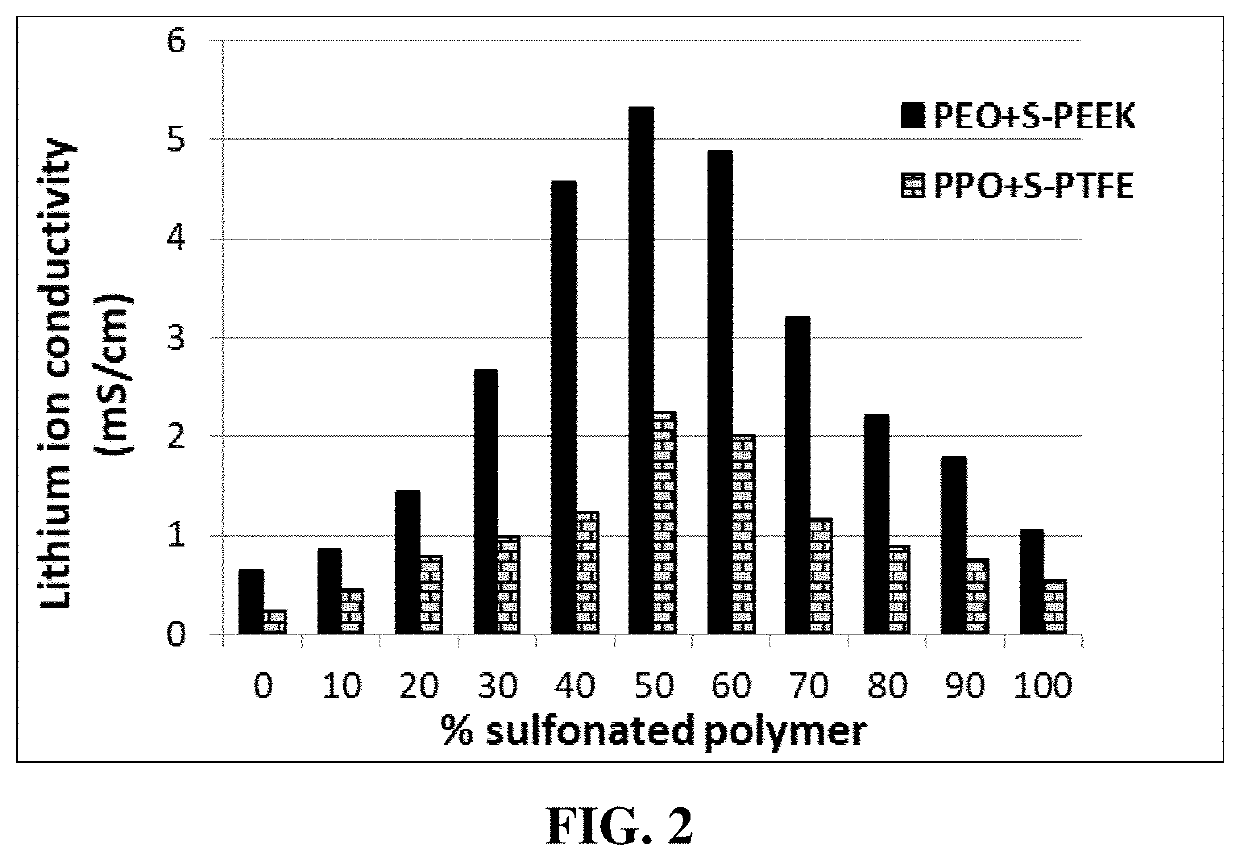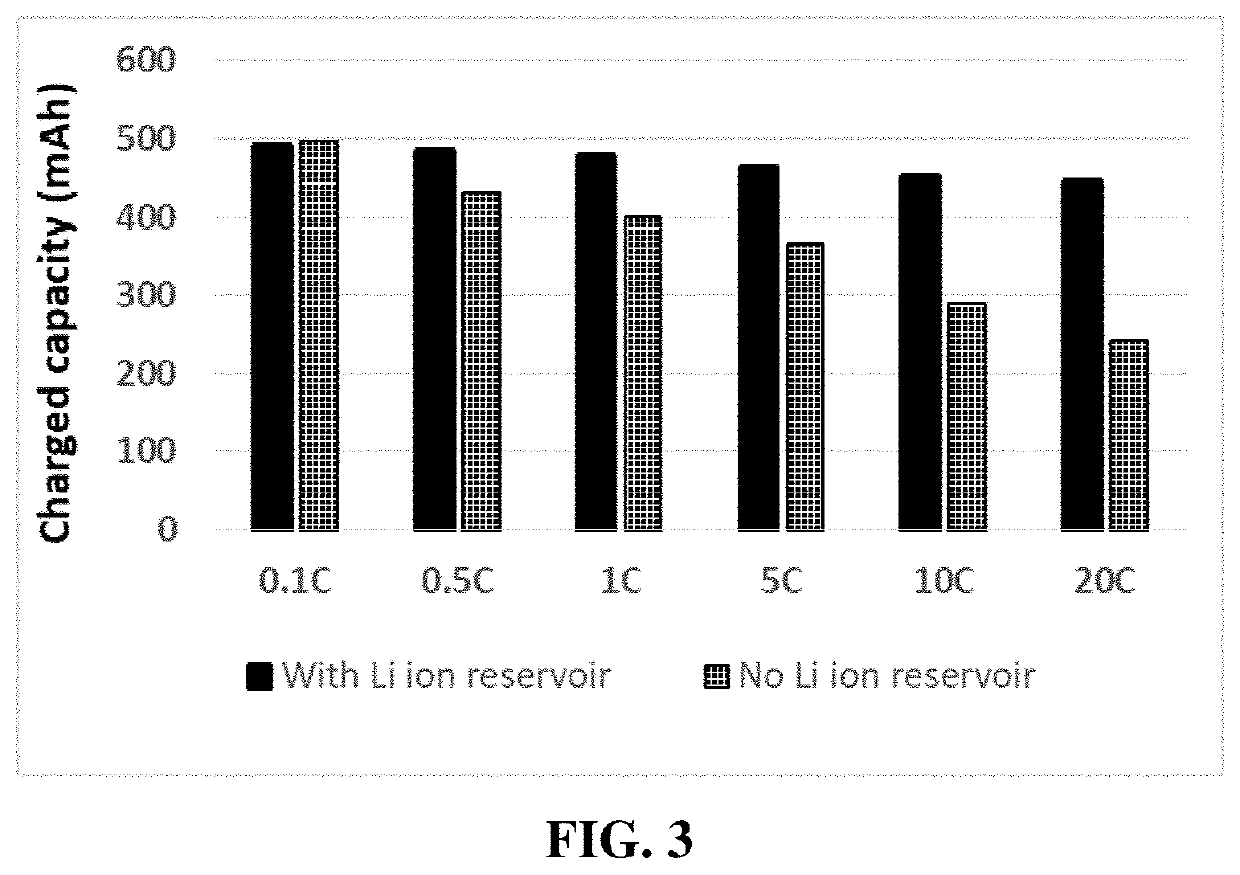Fast-chargeable lithium battery
a lithium battery, fast-charge technology, applied in the direction of cell components, electrochemical generators, cell component details, etc., to achieve the effect of improving the structural integrity of the porous structur
- Summary
- Abstract
- Description
- Claims
- Application Information
AI Technical Summary
Benefits of technology
Problems solved by technology
Method used
Image
Examples
example 1
of Sulfonated Polyaniline (S-PANi)
[0128]The chemical synthesis of the S-PANi polymers was accomplished by reacting polyaniline with concentrated sulfuric acid. The procedure was similar to that used by Epstein, et al. (U.S. Pat. No. 5,109,070, Apr. 28, 1992). The resulting S-PANi can be represented by the following Formula 1, with R1, R2, R3, and R4 group being H, SO3 or SO3H (R5=H) with the content of the latter two being varied between 30% and 75% (i.e., the degree of sulfonation varied between 30% and 75%).
[0129]The lithium ion conductivity of these SO3− or SO3H-based S-PANi compositions was in the range from 8.5×10−5 S / cm to 4.6×10−3 S / cm and their electron conductivity in the range from 0.1 S / cm to 0.5 S / cm when the degree of sulfonation was from approximately 30% to 75% (with y being approximately 0.4-0.6).
[0130]The porous framework for the lithium ion reservoir layer was obtained by dissolving S-PANi in water to form a polymer-water solution, which was freeze-dried to obtain ...
example 2
on of Electrically Non-Conducting Polymers
[0133]Polytetrafluoroethylene (PTFE), polysulfone (PSf), poly (ether ether ketone) (PEEK), polyimide (PI), and styrene-butadiene copolymers (SB) were separately immersed in a concentrated sulfuric acid (95%+5% water) at 65-90° C. for 4-48 hours to obtain sulfonated polymers. These sulfonated polymers were found to be electrically insulating (−8 S / cm), but lithium ion-conducting (typically 3×10−5 S / cm-4.5×10−3 S / cm, depending on the degree of sulfonation).
[0134]These highly sulfonated polymers, along with some desired amounts of baking soda as a blowing agent, were dissolved in water to form solutions, which were cast to form thin films onto a glass substrate and heated at 100° C.-250° C. for 0.3 to 5 minutes to produce porous structures. In one additional sample, graphene oxide sheets (graphene / polymer ratio= 1 / 10) were added to the sulfonated PEEK / baking soda solution to form a slurry, which was cast, dried, and heat-treated at 300° C. for ...
example 3
on of Graphene Oxide Sheets (GO) and Reduced Graphene Oxide (RGO) Foam
[0135]Chopped graphite fibers with an average diameter of 12 μm and natural graphite particles were separately used as a starting material, which was immersed in a mixture of concentrated sulfuric acid, nitric acid, and potassium permanganate (as the chemical intercalate and oxidizer) to prepare graphite intercalation compounds (GICs). The starting material was first dried in a vacuum oven for 24 h at 80° C. Then, a mixture of concentrated sulfuric acid, fuming nitric acid, and potassium permanganate (at a weight ratio of 4:1:0.05) was slowly added, under appropriate cooling and stirring, to a three-neck flask containing fiber segments. After 5-16 hours of reaction, the acid-treated graphite fibers or natural graphite particles were filtered and washed thoroughly with deionized water until the pH level of the solution reached 6. After being dried at 100° C. overnight, the resulting graphite intercalation compound ...
PUM
| Property | Measurement | Unit |
|---|---|---|
| pore size | aaaaa | aaaaa |
| pore size | aaaaa | aaaaa |
| temperature | aaaaa | aaaaa |
Abstract
Description
Claims
Application Information
 Login to View More
Login to View More - R&D
- Intellectual Property
- Life Sciences
- Materials
- Tech Scout
- Unparalleled Data Quality
- Higher Quality Content
- 60% Fewer Hallucinations
Browse by: Latest US Patents, China's latest patents, Technical Efficacy Thesaurus, Application Domain, Technology Topic, Popular Technical Reports.
© 2025 PatSnap. All rights reserved.Legal|Privacy policy|Modern Slavery Act Transparency Statement|Sitemap|About US| Contact US: help@patsnap.com



